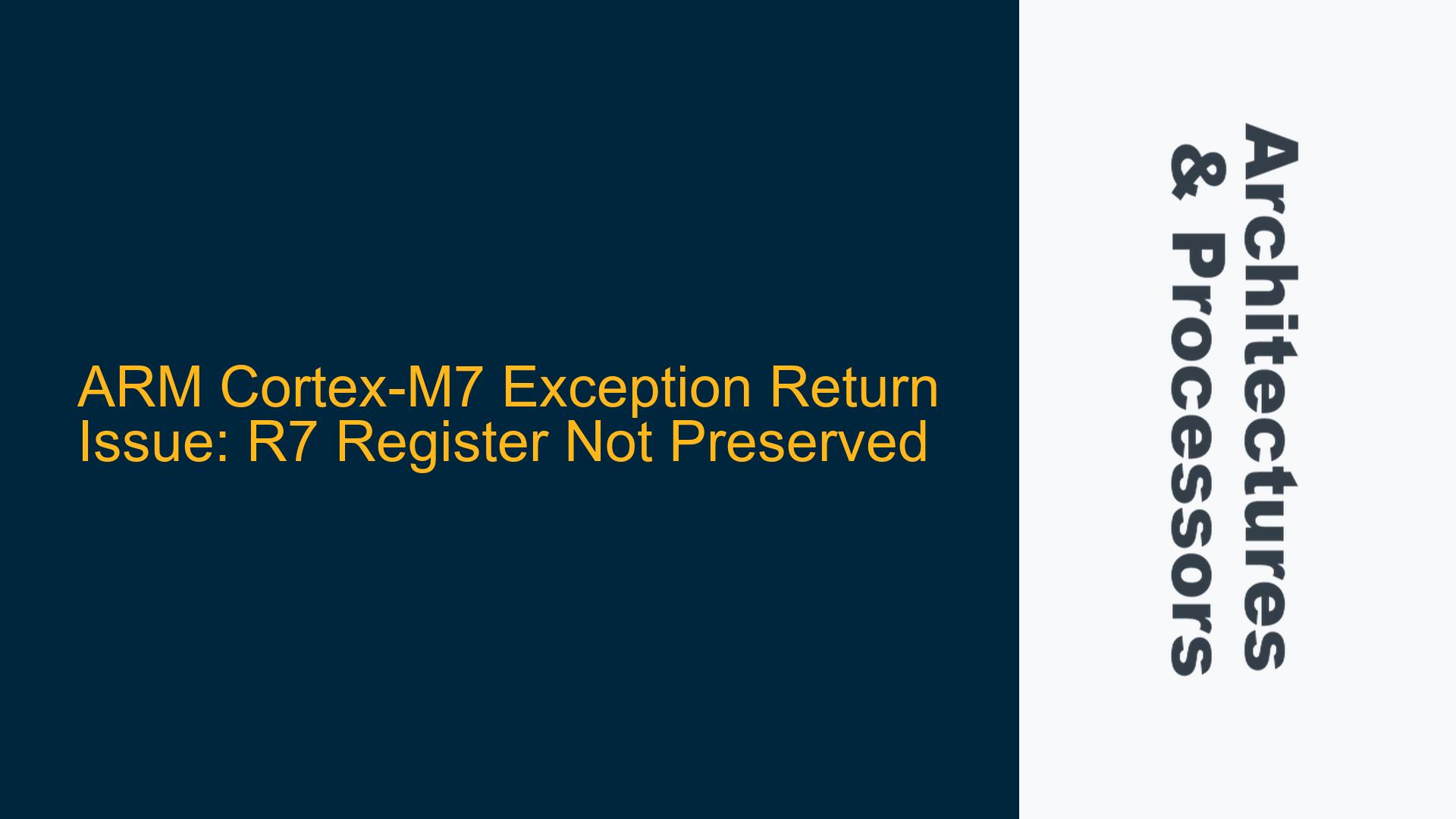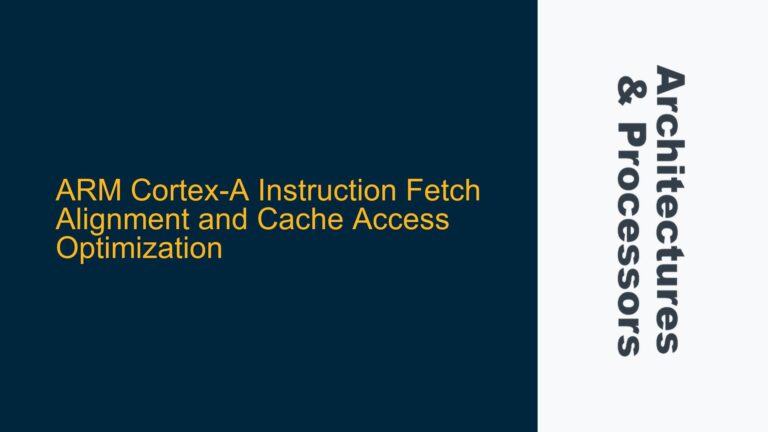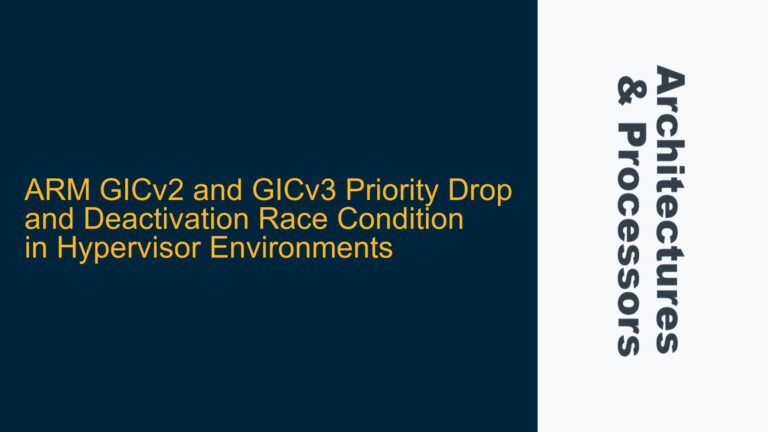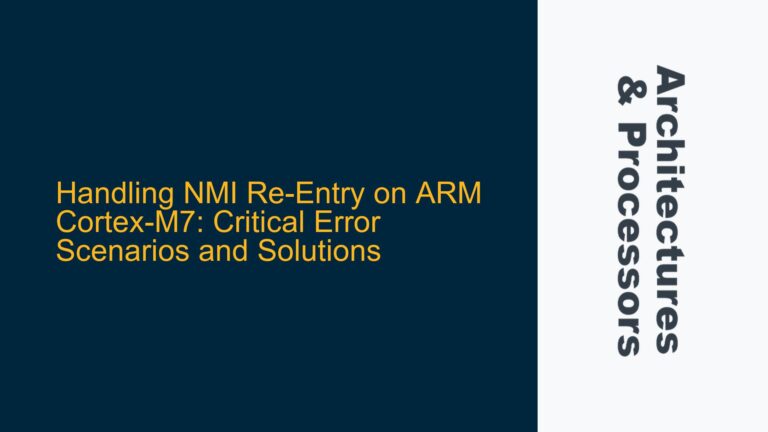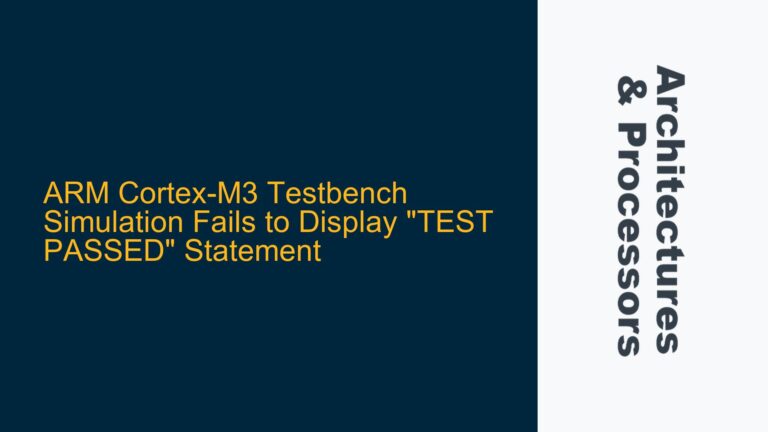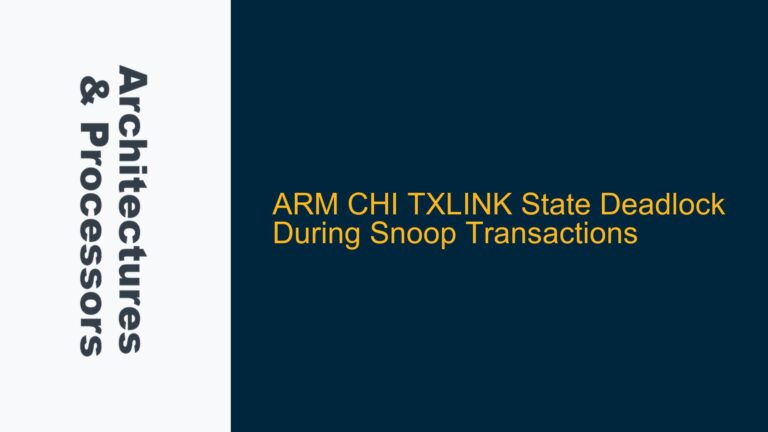ARM Cortex-M7 Exception Handling and R7 Register Corruption During EXC_RETURN
The ARM Cortex-M7 processor, known for its high performance and advanced features, is widely used in embedded systems. However, a critical issue has been observed where the R7 register is not preserved during exception return, specifically when executing the EXC_RETURN sequence. This issue manifests in a scenario where a BusFault exception is deliberately triggered, and the exception service routine is executed as expected. However, upon returning to the main program flow via the EXC_RETURN mechanism, the R7 register is corrupted, leading to unexpected behavior and potential system failure.
The R7 register, part of the ARM Cortex-M7’s general-purpose register set, is typically used for storing temporary data and is expected to be preserved across function calls and exception handling. The corruption of R7 during EXC_RETURN is particularly problematic because it violates the ARM Architecture Reference Manual’s specifications, which state that the core should not modify general-purpose registers during exception return unless explicitly instructed to do so.
This issue has been observed specifically when running a simulated ARM Cortex-M7 using ARM FastModels 11.26, suggesting that the problem may be related to the simulation environment or a subtle hardware-software interaction that is not immediately apparent. The corruption of R7 during EXC_RETURN can lead to incorrect program execution, data corruption, and system instability, making it a critical issue that requires immediate attention.
Memory Stack Corruption and Inconsistent Exception Handling
The corruption of the R7 register during EXC_RETURN can be attributed to several potential causes, each of which must be carefully examined to identify the root cause of the issue. One of the primary suspects is memory stack corruption, which can occur if the stack pointer (SP) is not correctly managed during the exception handling process. The ARM Cortex-M7 uses a dual-stack mechanism (Main Stack Pointer (MSP) and Process Stack Pointer (PSP)), and any misalignment or corruption of the stack can lead to incorrect register restoration during exception return.
Another possible cause is inconsistent exception handling, where the exception service routine does not correctly preserve the context of the interrupted program. This can happen if the exception handler modifies the R7 register or if the EXC_RETURN sequence is not correctly executed. The EXC_RETURN value, which determines the mode and stack to be used upon exception return, must be carefully managed to ensure that the correct context is restored.
Additionally, the issue may be related to the simulation environment itself. ARM FastModels 11.26, while a powerful tool for simulating ARM processors, may have subtle bugs or limitations that affect the behavior of the Cortex-M7 during exception handling. The simulation environment may not fully replicate the hardware behavior, leading to unexpected results such as the corruption of the R7 register.
Finally, the issue could be related to the specific implementation of the BusFault exception handler. If the handler does not correctly manage the exception return sequence or if it modifies the R7 register, this could lead to the observed corruption. The BusFault exception is a precise exception, meaning that the processor state is well-defined at the point of the exception, and any deviation from the expected behavior could indicate a problem with the exception handler or the underlying hardware.
Implementing Context Preservation and Debugging Exception Handling
To address the issue of R7 register corruption during EXC_RETURN, a systematic approach to troubleshooting and resolving the problem is required. The following steps outline a detailed process for identifying and fixing the issue:
Step 1: Verify Stack Management and Alignment
The first step is to verify that the stack is correctly managed and aligned during exception handling. This involves checking that the stack pointer (SP) is correctly set to the appropriate stack (MSP or PSP) before entering the exception handler and that the stack is not corrupted during the exception handling process. The stack should be aligned to an 8-byte boundary, as required by the ARM Architecture Reference Manual. Any misalignment or corruption of the stack can lead to incorrect register restoration during exception return.
Step 2: Ensure Correct Context Preservation in Exception Handler
The exception handler must correctly preserve the context of the interrupted program, including the R7 register. This involves saving the general-purpose registers, including R7, to the stack upon entry to the exception handler and restoring them before executing the EXC_RETURN sequence. The exception handler should not modify the R7 register unless absolutely necessary, and any modifications should be carefully documented and justified.
Step 3: Validate EXC_RETURN Sequence
The EXC_RETURN sequence must be correctly executed to ensure that the correct context is restored upon exception return. This involves verifying that the EXC_RETURN value is correctly set to indicate the mode and stack to be used upon return. The EXC_RETURN value should be carefully managed to ensure that it correctly reflects the state of the processor before the exception was taken.
Step 4: Debugging the Simulation Environment
If the issue persists after verifying the stack management, context preservation, and EXC_RETURN sequence, the next step is to debug the simulation environment. This involves running the same test scenario on different versions of ARM FastModels or on actual hardware to determine if the issue is specific to the simulation environment. If the issue is not observed on actual hardware, this suggests that the problem is related to the simulation environment and may require further investigation or a workaround.
Step 5: Review BusFault Exception Handler Implementation
Finally, the implementation of the BusFault exception handler should be reviewed to ensure that it correctly handles the exception and does not inadvertently modify the R7 register. The BusFault exception handler should follow the same context preservation and restoration procedures as other exception handlers, and any modifications to the R7 register should be carefully documented and justified.
Step 6: Implement Data Synchronization Barriers and Cache Management
In some cases, the corruption of the R7 register may be related to cache coherency issues or the lack of data synchronization barriers. The ARM Cortex-M7 features a cache, and if the cache is not correctly managed, it can lead to inconsistent memory states and register corruption. Implementing data synchronization barriers (DSB) and cache management instructions (e.g., cache invalidate, clean, and flush) can help ensure that the memory state is consistent and that the R7 register is correctly preserved during exception handling.
Step 7: Monitor and Analyze Register States
To further diagnose the issue, it is recommended to monitor and analyze the states of the registers, including R7, during the exception handling process. This can be done using debug tools that allow for real-time monitoring of register states. By comparing the register states before and after the exception, it is possible to identify any unexpected changes and pinpoint the source of the corruption.
Step 8: Consult ARM Architecture Reference Manual and Errata
If the issue remains unresolved, it is important to consult the ARM Architecture Reference Manual and any available errata for the ARM Cortex-M7 processor. The manual provides detailed information on the expected behavior of the processor during exception handling, and any known issues or errata may provide insights into the root cause of the problem. Additionally, reaching out to ARM support or the community forums may provide further assistance in resolving the issue.
Step 9: Implement Workarounds and Code Reviews
In cases where the root cause of the issue cannot be immediately identified or resolved, implementing workarounds may be necessary. This could involve modifying the exception handler to explicitly save and restore the R7 register or adjusting the stack management to ensure correct alignment. Additionally, conducting thorough code reviews and peer reviews can help identify any potential issues in the exception handling code that may have been overlooked.
Step 10: Update Simulation Environment and Tools
If the issue is determined to be related to the simulation environment, updating to the latest version of ARM FastModels or other simulation tools may resolve the problem. ARM frequently releases updates and patches for their simulation tools, and these updates may include fixes for known issues or improvements to the simulation accuracy. Ensuring that the simulation environment is up-to-date is an important step in resolving any simulation-related issues.
By following these troubleshooting steps, it is possible to systematically identify and resolve the issue of R7 register corruption during EXC_RETURN on the ARM Cortex-M7 processor. The key is to carefully verify each aspect of the exception handling process, from stack management to context preservation, and to leverage available tools and resources to diagnose and fix the problem.
